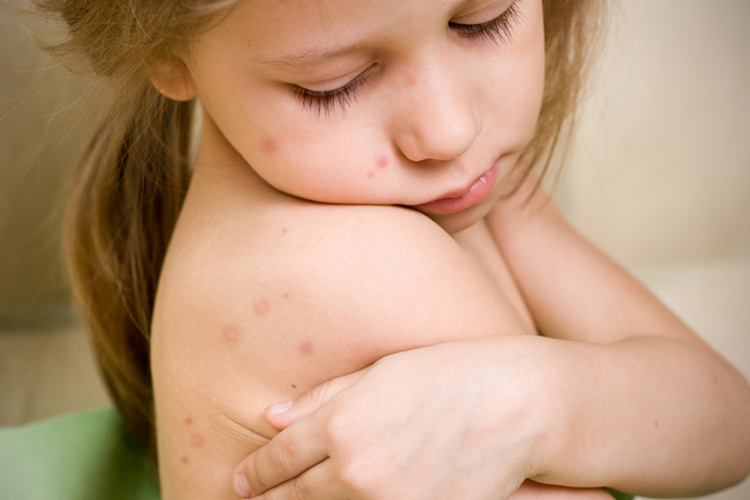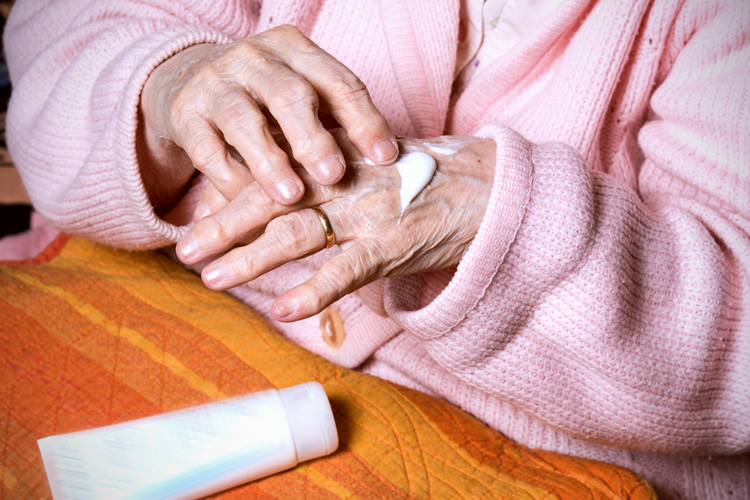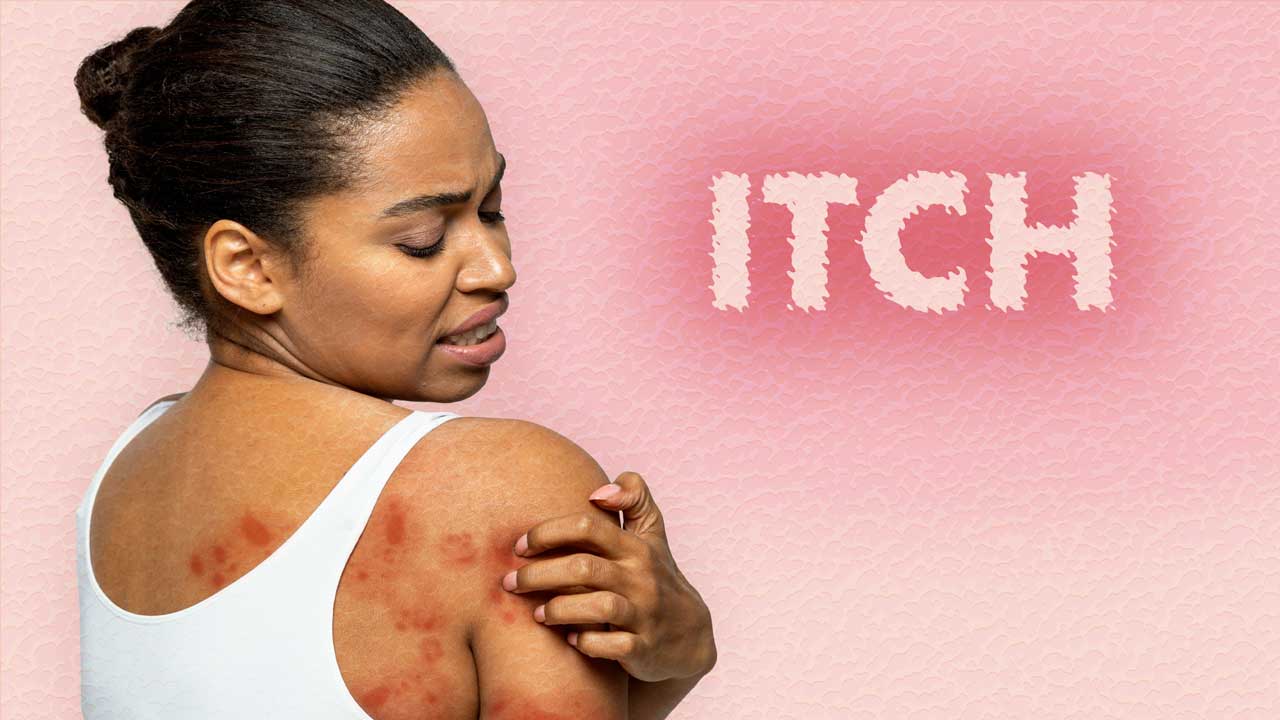Across clinical settings, pruritus (or itch) challenges care outcomes, can be hard to treat, and impacts quality of life, mental health and mortality.
What is Pruritus (Itch)?
Pruritus can be defined as an unpleasant sensation that evokes the feeling of wanting to scratch. The reason we itch is to protect the skin against noxious stimuli, as scratching or rubbing disrupts the irritant (Chen & Sun 2020).
However, too much scratching can inflame the skin, and sometimes, the cause of pruritus is not an external stimulus at all.
Accompanying many dermatologic conditions due to peripheral stimuli, pruritus also arises from systemic disease (renal, hepatic, endocrine), malignancy and medicines - all of which may present as skin disorders but actually originate in the central nervous system (Oakley 2016; Chan 2014). Pruritus without obvious primary skin lesions should be investigated for an underlying cause.
Whatever the origins of pruritus, scratching further inflames the skin and stimulates nerve fibres, initiating the itch-scratch cycle. As the patient scratches, they damage their skin, leading to the release of inflammatory chemicals that increase the itchy sensation (Miller & Radusky 2022). As such, assessing and treating itch as early as possible is an important facet of effective patient care.
Assessment of Pruritus
When assessing pruritus, the following categories will help identify what the underlying cause might be:
- Dermatologic - an itch associated with skin conditions
- Systemic - driven by organs other than skin (e.g. uremia, cholestasis)
- Neurogenic/neuropathic - related to the central and peripheral nervous systems, nerve compression or nerve irritation
- Psychogenic - no dermatologic cause, with a psychological component.
(Fazio & Yosipovitch 2022a)
Varied causes suggest multiple mechanisms may induce pruritus. Sensory nerve endings in the epidermis and dermal-epidermal junction are stimulated by chemical mediators such as histamine, opioids, serotonin and prostaglandins. Signals are transmitted along unmyelinated, histamine-sensitive and insensitive peripheral C-nerve fibres (as opposed to C-nerve fibres that transmit pain), which causes the sensation of an itch (Fazio & Yosipovitch 2022).

Pruritus characteristics will provide clues to the origin and will indicate the most effective treatment options:
- Is the itch acute? i.e. something triggers it and a ‘scratch’ usually relieves it.
- Or is it chronic? i.e. present for more than six weeks and not relieved by scratching.
- Is it a rash that is itchy or an itch without a rash?
- Is the itch localised or generalised? Generalised and severe pruritus demands evaluation for systemic disease, which will mean blood tests, physical examination and possibly imaging.
(Szepietowski & Reich 2023; Chinniah & Gupta 2014)
Determining the underlying cause of pruritus and individualizing treatment will require a nursing assessment, which should include a full history as well as a skin examination.
When performing a skin examination, ensure that you use adequate lighting to inspect the skin texture and any subtle lesions that may be present. Pay attention to affected and non-affected skin, including web spaces and skin folds. Primary lesions that are unaltered by scratching may indicate a dermatological cause while secondary lesions only (e.g. excoriations) may suggest a systemic cause (Reamy et al. 2011). Make a note of lesion distribution and contributing conditions, such as dry skin.
When taking the patient’s history, the ‘OLD CARTS’ mnemonic formula will help to guide and order your collection of information:
- Onset - when did it start?
- Location - localised or generalised? Initial location, progression, distribution (some aetiologies display pruritus in favored sites)?
- Duration - acute or chronic?
- Character - stinging or burning?
- Aggravating factors - environmental, treatments prescribed or over-the-counter medicine?
- Relieving factors - environmental, treatments prescribed or over-the-counter medicine?
- Timing - is the itch consistently present or does it come and go? Is it seasonal or related to the time of day? Has it been experienced previously? Are there circumstances surrounding appearance such as illness, travel, or contacts?
- Severity - is it so severe that it disrupts sleep?
(Van Onselen 2016)
Be sure to add a detailed medication history, including over-the-counter medicines, natural remedies, new prescription medicines, and current medicines where the dose has been altered.
Treatment of Pruritus

The first line of management for mild, localized pruritus is topical therapies. Systemic strategies are added depending on severity and extent (Fazio & Yosipovitch 2021, 2022b). These should be employed in conjunction with the removal of aggravating external factors, for example:
- Encouraging cooler, shorter showers
- Moisturizing immediately after bathing in order to improve barrier function and maintain the acid mantle
- Using fragrance-free soap products to reduce skin irritation
- Wearing loose-fitting clothes and avoiding rough fabrics such as wool
- Using cool compresses to relieve heat and assist with hydration of the skin
- Maintaining a cool, neutral-humidity environment and avoiding extreme temperature changes
- Using a humidifier during winter
- Reducing stress
- Cutting fingernails or wearing gloves at night to avoid further scratching
- Sleeping in a cooler environment to avoid overheating.
(AAD 2018; Healthdirect 2021)
Applying wet dressings with moisturizer can be soothing, but caution must be applied in older adults and people with infected skin.
Additional measures that might be applied depending on the underlying cause include:
- Topical antipruritics
- Oral antihistamines, although considering the sedating effect
- Topical corticosteroids
- Phototherapy (with a dermatologist’s referral).
(Chinniah & Gupta 2014)
Conclusion
Pruritus commonly causes physical and psychological distress. Individual evaluation with considered methodical care and management will help to aid this complex issue and provide much-needed relief to your patient.
Topics
References
- American Academy of Dermatology Association 2018, How to Relieve Itchy Skin, AAD, viewed 15 December 2023, https://www.aad.org/public/everyday-care/itchy-skin/itch-relief/relieve-itchy-skin
- Chan, B 2014, Paraneoplastic Pruritus, DermNet NZ, viewed 14 December 2023, https://dermnetnz.org/topics/paraneoplastic-pruritus/
- Chen X & Sun, Y 2020, ‘Central Circuit Mechanisms of Itch’, Nature Communications, vol. 11, no. 3052, viewed 14 December 2023, https://www.nature.com/articles/s41467-020-16859-5
- Chinniah, N & Gupta, M 2014, ‘Pruritus in the Elderly – A Guide to Assessment and Management’, Australian Family Physician, vol. 43, no. 10, viewed 15 December 2023, https://www.racgp.org.au/afp/2014/october/pruritus-in-the-elderly-%E2%80%93-a-guide-to-assessment-and-management/
- Fazio, SB & Yosipovitch, G 2022a, Pruritus: Etiology and Patient Evaluation, UpToDate, viewed 15 December 2023, https://www.uptodate.com/contents/pruritus-etiology-and-patient-evaluation
- Fazio, SB & Yosipovitch, G 2022b, Pruritus: Therapies For Generalized Pruritus, UpToDate, viewed 15 December 2023, https://www.uptodate.com/contents/pruritus-therapies-for-generalized-pruritus
- Fazio, SB & Yosipovitch, G 2021, Pruritus: Therapies For Localized Pruritus, UpToDate, viewed 15 December 2023, https://www.uptodate.com/contents/pruritus-therapies-for-localized-pruritus
- Healthdirect 2021, Itchy Skin, Australian Government, viewed 15 December 2023, https://www.healthdirect.gov.au/itchy-skin
- Miller, B & Radusky, R 2022, How to Break the Itch-Scratch Cycle if You Have Severe Eczema, Everyday Health, viewed 15 December 2023, https://www.everydayhealth.com/eczema/itch-scratch-cycle-severe-eczema/
- Oakley, A 2016, Pruritus, DermNet NZ, viewed 14 December 2023, https://dermnetnz.org/topics/pruritus
- Reamy, B V, Bunt, C W & Fletcher, S 2011, ‘A Diagnostic Approach to Pruritus’, American Family Physician, vol. 84 no. 2, viewed 15 December 2023, https://www.aafp.org/afp/2011/0715/p195.html
- Szepietowski, JC & Reich, A 2023, ‘Assessment of Pruritus’, BMJ Best Practice, viewed 15 December 2023, https://bestpractice.bmj.com/topics/en-gb/612
- Van Onselen, J 2016, ‘Skin Assessment and the Language of Dermatology’, Nursing in Practice, viewed 15 December 2023, https://www.nursinginpractice.com/clinical/dermatology/skin-assessment-and-the-language-of-dermatology/
 New
New 
